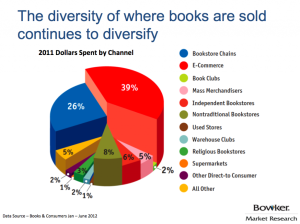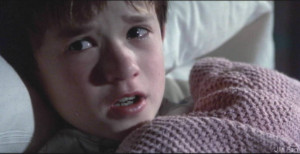My Rule: Don’t trust a brilliant idea unless it survives the hangover. – Jimmy Breslin
All due respect to Somerset Maugham, there are three rules for writing a novel and I know what they are.
Now, it is quite common to hear, at conferences and in classrooms across our favored land, in tones pugnacious and pejorative, that when it comes to the art of the novel, quite simply and unequivocally, There are no rules!
I would like to test that enthusiastic effusion and establish the contrary position.
To begin the argument we must, as with all fruitful discussions, establish our assumptions. I am going to assume that I am addressing writers who actually want to SELL, be that to a traditional publisher or directly to readers via self-publishing.
I am also going to assume that a novel has a certain form. That form is a story. While we may differ on what constitutes a story per se, can we at least agree that what Jack Nicholson wrote in The Shining (1000 pages of All work and no play makes Jack a dull boy) is certainly not a novel? (If you wish to call such a thing an “experimental novel,” I will have to take issue. That would be like calling Kim Kardashian an “experimental actress.” It just doesn’t make sense in any rational world.)
With all this in mind, here we go:
RULE # 1 – DON’T BORE THE READER
Can anyone disagree with that? Doesn’t it make sense that this should be emblazoned across the writer’s creative consciousness as the most foundational of all rules?
If you bore the reader, you don’t sell the book. Or, at least, if the reader does manage to make it to the end, you don’t sell your next book.
It’s a rule. In fact, it’s a law, just like gravity.
Which leads to:
RULE #2 – PUT CHARACTERS IN CRISIS
Novels that sell are about people in some kind of trouble. Conflict is the engine of story. You can create “interesting” or “quirky” characters all day long, but unless they are tested by trial they wear out quickly (here I will issue a confession: I’ve never been able to get past the first 50 or 60 pages of A Confederacy of Dunces, and I’ve tried. Believe me, I’ve tried).
Now, trouble can be generated in many ways. The narrator of Nicholson Baker’s The Mezzanine is simply trying to get from the lobby of his office building to the next level via an escalator. That’s the whole story, and the trouble is inside his head.
At the other end of the spectrum are the commandos in The Guns of Navarone.
The point is, every novel must have some fire, not just a layout of kindling and logs. That’s a rule.
RULE #3 – WRITE WITH HEART
I admit this rule is somewhat difficult to define. It’s a bit like what a Supreme Court justice once said about obscenity: “I can’t define it, but I know it when I see it.”
The novels that not only sell, but endure, have something of the author’s beating heart in them. We could run off a list of such novels, from To Kill A Mockingbirdby Harper Lee to the Harry Bosch series by Michael Connelly.
In my seminars, when we work on voice and style, I mention two novels that were publishing in 1957. They were as different from each other as Arbuckle and Keaton, and challenges for the publishers. Yet they both became bestsellers and, more to the point, continue to sell thousands and thousands of copies today.
They are Atlas Shrugged by Ayn Rand and On the Roadby Jack Kerouac. No matter how you ultimately come out on the merits of either book, what can’t be denied is that every page pulsates with the author’s voice and vision.
So put your heart in every scene of your novel. It’s a good rule.
Now, when a writer says, “There are no rules,” I suspect what he’s really saying is there is no one way to do the things we’ve been talking about here. And that is mostly correct.
I say mostly because, over time, it has been demonstrated that there are fiction techniques that generally work better than others. A good teacher (or editor) is able to help students learn the things that tend to work and avoid the things that tend not to.
And then it’s up to the writer to make choices. If a writer decides not to follow a tried and true method, at least she should know why.
For example, we talk a lot about starting a novel off with a hook (or, as I like to put it, a “disturbance.”) But what if you want to start your historical with ten pages of setting and description? Well, you’re certainly allowed to. And maybe you’ll manage to make those ten pages so interesting that readers will wish they’d go on and on.
But the odds are you’ll bore them, as they keep on asking Who is this story supposed to be about? Why should I care about any of this?
You might then decide it’s better to use the technique of starting with a disturbance and dropping in details within the action. A technique you can learn and practice.
But there may be another, more insidious meaning to the “no rules” proclamation. The espouser may really be saying There is nothing to learn! Anytime you teach technique you’re limiting the writer, hemming him in, stifling all that is good and original!
To which I kindly yet firmly say, Bunk. Can you imagine George Gershwin believing that? Do you think we’d have Rhapsody in Blue if he hadn’t learned the scales as boy, then the classics under the tutelage of his mentor, Charles Hambitzer? Technique didn’t stifle Gershwin, it freed him.
Quod erat demonstrandum.
These, then, are the three rules for writing a novel. You can break them if you like, but do so and they will break your chances of success.



